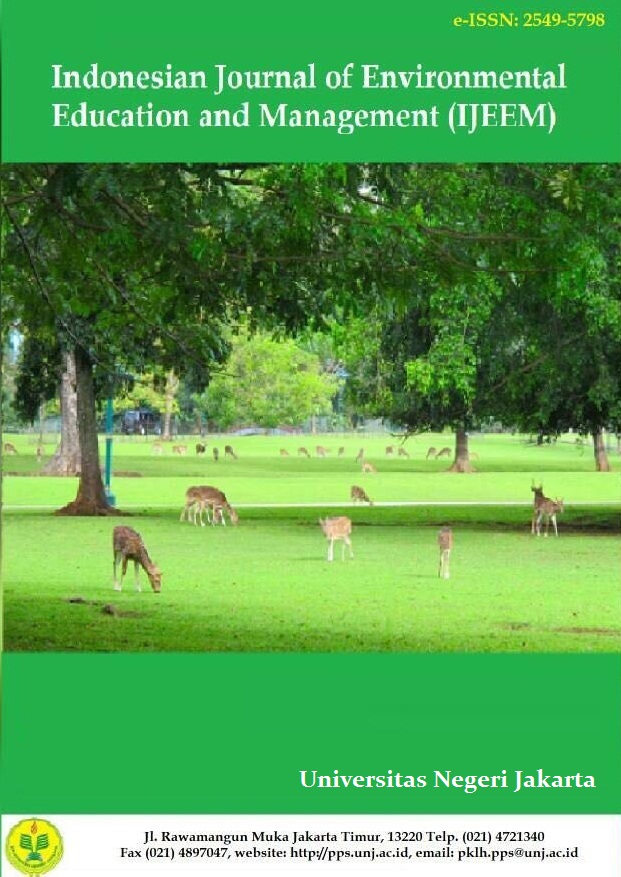Correlation between Teacher Instructional Leadership with Students New Environmental Paradigm (Studies Correlational In SMA Negeri 13 Jakarta)
Abstract
The environmental crisis that occurred allegedly derived from human mistakes perspective about himself against nature. Therefore, we need a new perspective or paradigm of the environment or the New Environmental Paradigm (NEP). To change the way students to be more environmentalism based on NEP, teachers need to integrate the knowledge and attitude of the environment through the influencing process of instructional leadership held by teachers. The purpose of this study was to determine the relationship between teachers Instructional Leadership with New Environmental Paradigm (NEP) students in high school. This research was conducted in SMA Negeri 13 Jakarta in April 2016. This type of research is quantitative with survey method through correlational studies. The subjects were students of class X Science with a total sample of 130 students were selected by simple random sampling. Result of the normality data tested by Kolmogorov-Smirnov test, resulting that two data population normality distributed. Data homogeneity tested by Bartlett test, resulting data obtained from both homogeneous variables. Hypothesis test using regression test, found that the regression model Ŷ = 120.839+ 0.238X had a significant and linear relationship. Pearson Product Moment test results obtained by the correlation value of 0.323. The calculation of the coefficient of determination obtained value of 0.108, which means teachers instructional leadership contributed to the students new environmental paradigm by 10.8%, while 89.2% were caused by other factors.





